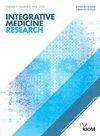髋关节或膝关节置换术后疼痛管理和功能恢复的引导和运动成像:一项实用的前瞻性混合方法研究
IF 3
4区 医学
Q2 INTEGRATIVE & COMPLEMENTARY MEDICINE
引用次数: 0
摘要
背景:整形外科手术经常导致急性术后疼痛,阻碍康复依从性。为了改善疼痛管理和功能恢复,在髋关节和膝关节置换术中引入了引导和运动想象(GMI)练习。方法在荷兰Schakelring骨科进行了一项实用的前瞻性混合方法实施评估,80名受试者在膝关节或髋关节置换术后接受了为期4周的康复计划,包括GMI。结果包括自我报告的疼痛,定时起床测试,10米步行测试,以及与历史对照组相比的药物使用情况。过程评估是基于6个会议报告、一个焦点小组和8个访谈。结果与对照组相比,GMI组最后测量的疼痛评分显著降低(p = 0.030,标准平均差(SMD) = 0.87)。与对照组相比,GMI膝关节组的疼痛评分随着时间的推移而降低(p = 0.015, SMD = 1,15),而髋关节组则没有(p = 0,39, SMD = 0,43)。在4周康复期结束时,GMI膝关节组与对照组相比有更好的时间Up &; Go和10米步行测试(p = 0.006和p = 0.027)。对会议、焦点小组和面谈的专题分析产生了下列关键的执行主题:个人适应、融入康复方案、工作人员的动机和态度、感知到的支助、监测结果和创造学习历史、感知到的效果。结论监测和评估实施过程和积极的临床结果促进了荷兰康复环境中GMI的实施。本文章由计算机程序翻译,如有差异,请以英文原文为准。
Guided and motor imagery for pain management and functional recovery after arthroplasty of the hip or knee: A pragmatic prospective mixed-methods study
Background
Athroplastic surgery often results in acute post-operative pain, hindering rehabilitation compliance. To improve pain management and functional recovery, guided and motor imagery (GMI) exercises were introduced in hip and knee arthroplasty.
Methods
A pragmatic prospective mixed-methods implementation evaluation was conducted at the orthopaedic department of Schakelring, the Netherlands. 80 subjects underwent a 4-week rehabilitation program including GMI after knee or hip arthroplasty. Outcomes included self-reported pain, Timed Up & Go test, 10-meter walk test, and medication use compared with a historical control group. A process evaluation was based on 6 meeting reports, a focus group and 8 interviews.
Results
Last measured pain scores were significantly lower in the GMI group compared to control (p = 0,030, Standard Mean Difference (SMD) = 0,87). Pain scores reduced over time in the GMI knee group compared to control (p = 0,015, SMD = 1,15), not in the hip group (p = 0,39, SMD = 0,43). Better Timed Up & Go and 10-meter walk test in GMI knee group versus control at the end of the 4 week rehabilitation period (p = 0,006 and p = 0,027). Thematic analysis of meetings, focus group and interviews resulted in the following critical themes for implementation were: individual adaptation, embedding in the rehabilitation program, motivation and attitudes of staff, perceived support, monitoring of outcome and creating a learning history, perceived effects.
Conclusions
Monitoring and evaluating the implementation process and positive clinical results facilitated the implementation of GMI in the rehabilitation setting in the Netherlands.
求助全文
通过发布文献求助,成功后即可免费获取论文全文。
去求助
来源期刊

Integrative Medicine Research
Medicine-Complementary and Alternative Medicine
CiteScore
6.50
自引率
2.90%
发文量
65
审稿时长
12 weeks
期刊介绍:
Integrative Medicine Research (IMR) is a quarterly, peer-reviewed journal focused on scientific research for integrative medicine including traditional medicine (emphasis on acupuncture and herbal medicine), complementary and alternative medicine, and systems medicine. The journal includes papers on basic research, clinical research, methodology, theory, computational analysis and modelling, topical reviews, medical history, education and policy based on physiology, pathology, diagnosis and the systems approach in the field of integrative medicine.
 求助内容:
求助内容: 应助结果提醒方式:
应助结果提醒方式:


